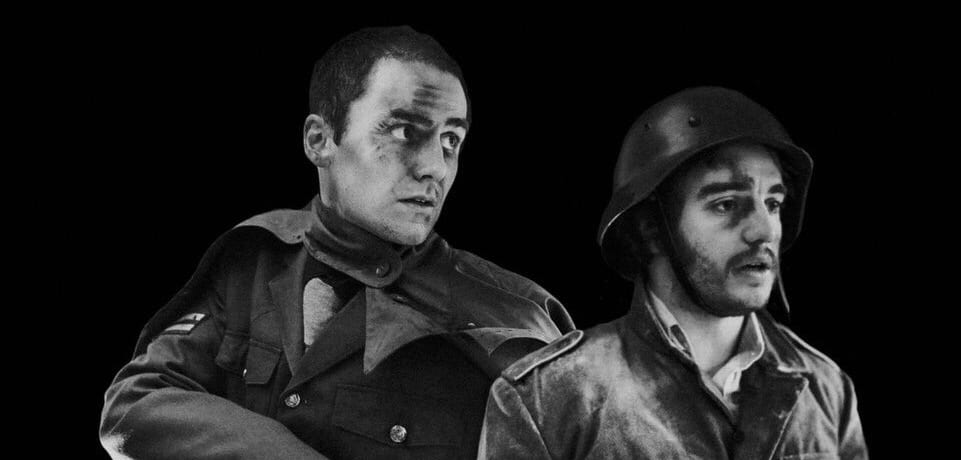The First World War has been widely portrayed as scenes of bloodshed or heroic acts in theatres and films. Nonetheless, Tom Stuchfield’s Somewhere a Gunner Fires, set along the Italian front in 1914-1918, brings a twist to this theatrical tradition as six characters-a volunteer, a girl in the blitz, a builder, the tailor, an American objector and an officer who can never live down his mistakes-stand still on the pitch-black stage, lit only by spotlights, to deliver an equally compelling performance.
Inspired by a conversation with a traveller in Poperinge, Belgium, about how three generations of his family were lost to three different wars, scriptwriter and director Stuchfield recreates on stage individual stories about how lovers are separated due to conscription, enemies learn to love each other as well as soldiers on the battlefield and loyal spouses back home are confronted by their conscience as they counter their moral beliefs to survive. These stories are interlaced together as the characters meet by chance, and ultimately form a picture of human nature exposed by the war, sacrifice, friendship, love and endurance-all that make us human.
Cliché the theme may seem; yet the intricate linguistic imagery gives the play a soul-stirring effect by expanding the apparently minute actions or quotidian objects to the psychological and philosophical mirroring of the pain brought by the war, such as how Isabella, to Wilkinson, no longer exists as a person but letters, unsent, yet dedicated to her every day. The play also toys with the contrast between the audience’s expectations of visual spectacles and the minimalizing of dramatic effects, as the death or wounding of characters in the battle is merely touched upon lightly by a single line at the end of some scenes, as if suffering is too common to be made dramatic.
When there aren’t a lot of actions in the performance, the storytelling relies heavily on the actors’ and actresses’ delivery of their lines. The cast’s impeccable control of their voices in switching between male and female roles, accents and psychological states on one hand enriches the play as they introduce more side characters to the narrative to complicate the plot, and on the other hand vivifies the characters with distinctive personalities. All actors and actresses inject much emotion into their characters, bewitching the audience with war narrative’s verisimilitude. If Somewhere a Gunner Fires was a radio play without visuals, the cast would have no problem in delivering a compelling story with their top-notch performance.
That said, one of the high points of the play rests on the facial expressions and gestures which are on point in capturing the emotional states of the characters. Another note-worthy visual feature of this play is the costume design which has real-life references to photos, posters and paintings showing the military uniform and women’s everyday garments in the early 20th century.
Combining daring theatrical arrangements, spellbinding performances with heart-wrenching stories, Somewhere a Gunner Fires is a dynamite project four years in the making that transcends history to offer contemporary audience a view of the war that changed the world a century ago.

